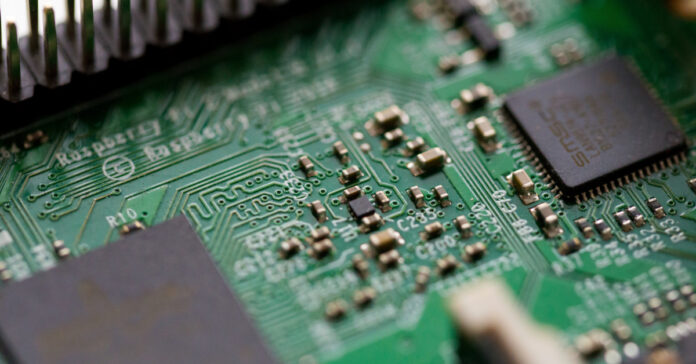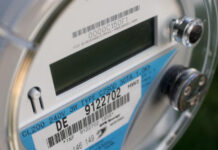The Wall Street Journal just published the article “The World Relies on One Chip Maker in Taiwan, Leaving Everyone Vulnerable” about how Taiwan Semiconductor Manufacturing Company (TSMC) makes most of the chips in use today, and 92 percent of the world’s most sophisticate chips. They frequently manufacture chis for other companies, including Apple, Qualcomm and others.
This quote from the article gets to the cusp of the matter:
“Its dominance leaves the world in a vulnerable position, however. As more technologies require chips of mind-boggling complexity, more are coming from this one company, on an island that’s a focal point of tensions between the U.S. and China, which claims Taiwan as its own.
Analysts say it will be difficult for other manufacturers to catch up in an industry that requires hefty capital investments. And TSMC can’t make enough chips to satisfy everyone—a fact that has become even clearer amid a global shortage, adding to the chaos of supply bottlenecks, higher prices for consumers and furloughed workers, especially in the auto industry.
The situation is similar in some ways to the world’s past reliance on Middle Eastern oil, with any instability on the island threatening to echo across industries. Companies in Taiwan, including smaller makers, generated about 65% of global revenues for outsourced chip manufacturing during the first quarter of this year, according to Taiwan-based semiconductor research firm TrendForce. TSMC generated 56% of the global revenues.
Being dependent on Taiwanese chips “poses a threat to the global economy,” research firm Capital Economics recently wrote.”
In other words, TSMC is potentially a weak point in the supply chain for millions of products we rely on every day.
What if?
What exactly would life be like if an invasion by China or a natural disaster destroyed TSMC? How would our lives change?
I think the immediate impact would be on the stock market as the share price of companies that rely on chips would quickly drop. Device manufacturers who do not make their own chips would crater. Before long, people would realize that it’s not just Apple, with is iPhone and Macs, that depend on chips. Appliances, televisions, air conditioners, cars and trucks, airplanes, and every item that is part of the Internet of Things, from doorbells to security cameras, would be impacted. Almost every electronic device today has a chip or ten in it, including my flashlight and your LED lightbulbs.
Companies like Samsung, which can make their own chips, would rise in value. Small chip manufacturers, even those that make older chips, would see a surge.
Everything with a microchip in it, from cars to cell phones to a child’s talking doll, would become immensely more expensive and in short supply. People could not upgrade their phones, tablets and computers as often as they do. People who repair phone screens would see their business boom as most of us could no longer afford to buy a new phone.
Second, every electronic device would suddenly have value on the resale market. That old iPhone 6 you threw in your junk drawer will be valuable again. Companies will spring up that recover and harvest chips from old or broken phones. Just as people buy rebuilt carburetors for old cars and junk yards stock wrecked vehicles for people who want a replacement part for a Ford F-150, an entire market would spring up selling used computer chips and electronic components.
Slow Impact that Builds
At first, how we live our lives would not change very much, but within six months, we will begin to feel the effects of a loss of new microchips. Things that break will stay broken. There will be shortages of cars, and prices for used vehicles will rise even more than today.
Before long, problems in farming, manufacturing and distribution will begin. Large farming operations rely on modern technology, like GPS guidance systems for everything from sprayers to harvesters. The days of manufacturing control boards built with manual switches and analog dials are behind us. Manufacturing lines today rely on robotics and chips control many processes. When parts fail, it will be difficult to get replacements and then it will be impossible. Trucks are also far more reliant on chips than they were decades ago, and while they can run hundreds of thousands of miles, even 18-wheelers need repairs.
Distribution applies to things like electricity, water, and gas as well. Many meters today no longer need a meter reader to read them. Thanks to computer chips, companies can remotely read the meters. What happens when you can’t get electric to a new house because no more meters are available? And we all saw with the gas line hack how dependent our gasoline and diesel distribution systems are on computers.
Information technology will also change. For example, no new chips means no new server farms, and progress on memory chips and hard drive size will slow or go backwards as companies can only produce models that were introduced several years ago with older chips. It will be difficult to replace routers that fail, meaning that the entire cloud could get filled up and the Internet could stutter or experience slowdowns our outright failures.
Dialing Back Technology
A lack of new chips will dial back new technology like 5G and virtual reality and put new technology developments on hold. Driverless cars, which rely on enormous amounts of computing power and high-tech gizmos, will go back to the drawing board. Companies will also have to hit the pause button on electric vehicles and even hybrids.
It would not surprise me to see the government seize large quantities of chips in distributor warehouses for “national security purposes.” This will just exacerbate problems in the consumer markets.
The big question is: Will they build products using older generations of chips, or even no chips at all? Some of this will be easy: We can manage without electric bicycles and scooters; we lived for years with thermostats that used a mercury switch and could not be programmed remotely, and we can do so again. Life before the microchips was less convenient, but it was still very livable. We will just have to make some adjustments.
A World-Changing Event
In my opinion, the destruction of TSMC would definitely be a world-changing event, but it is unlikely to be a SHTF moment that results in a collapse of society. Getting knocked back to the 1990s on a technology basis won’t be any fun, but it will kill far fewer people than getting knocked back to the technology of the 1880s, which is what could happen in some SHTF events.
It will be disruptive, but we will recover. At first, we will have to adapt, but eventually the technology will come back. They will rebuild and create new factories in other countries. Top TSMC scientists will be in as much demand as German rocket scientists after WWII.
My guess is that in three years, things will slowly start to improve. In five years, the situation will have stabilized, even if it has not yet returned to “the good old days” when you could buy a Tesla, stream a move, and text a friend. After a decade, we should make forward progress.
Like any disruptive event, there will be winners and losers. Fortunes will be made and lost. Lives will be uprooted and habits will be changed. There will be people who suffer and those that barely notice the change.
What You Can Do
As a prepper, my advice is often to stock up, but I don’t recommend that you store extra phones, buy semiconductors, spare hard drives, or other devices. Instead, I recommend you do what you can to increase your self-sufficiency. This might include stocking food and providing your own, but there’s more to prepping than having a long-term food storage plan.
Preppers often say it “one is none and two is one,” meaning you should have more than one gun, water filter, or other device you will rely on in a grid-down or other SHTF scenario. We refer to this as the layered approach to prepping. As we explain under our About Us section, the layered approach to prepping relies on having multiple ways to accomplish something, which automatically provides redundancy and a fallback plan. For example, my wife and I have an electric grain mill, but we also have two hand-crank grain mills, one of which is large and heavy, the other is small and inexpensive.
When applied to a future in which microchips are suddenly unavailable, the layered approach means you don’t rely solely on modern devices. Just because your kids play video games doesn’t mean you should get rid of the deck of cards and scrap the board games. You may use your tablet and laptop, but keep a few legal pads, pens, and pencils on hand, just in case. If your stovetop and oven all use digital controls, an inexpensive hot plate might be an inexpensive option, plus a camp stove or propane powered outdoor grill.
My dad always used to say, “There’s more than one way to skin the cat.” If TSMC gets knocked off line, we’ll need to use that ingenuity to keep our houses heated, our bellies full, and our lives comfortable.








